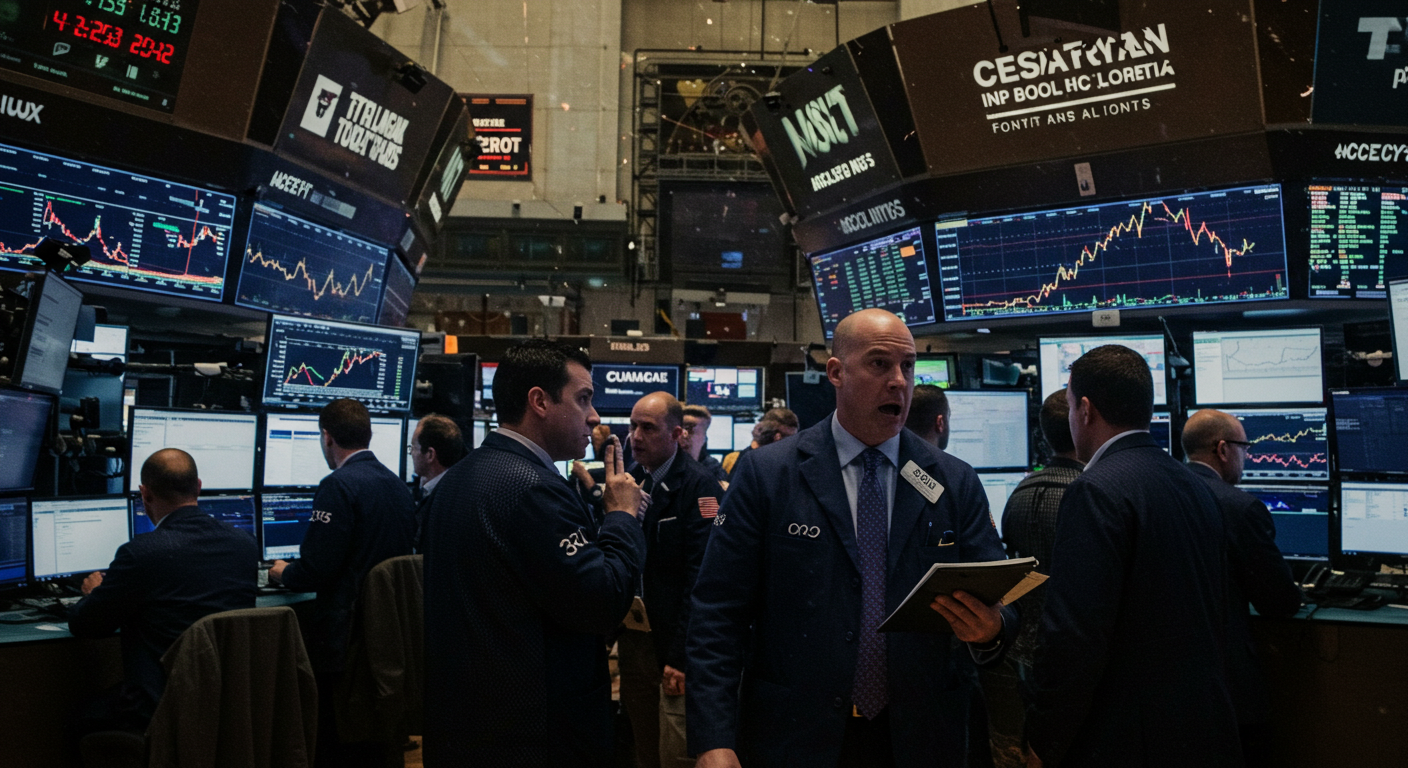Stock Markets Plunge as Inflation Fears Grip Investors
Understanding Inflation
Inflation refers to the rate at which the general level of prices for goods and services rises, consequently eroding purchasing power. When inflation rates escalate, consumers are forced to spend more for the same goods and services, leading to a decrease in real income. This economic phenomenon can significantly impact investor sentiment, often leading to volatility in stock markets.
Recent Inflation Trends
In recent months, inflation has reached multi-decade highs in several countries, largely attributed to lingering supply chain disruptions, increased demand post-pandemic, and geopolitical tensions affecting energy prices. The Consumer Price Index (CPI) has shown a persistent upward trajectory, prompting concerns among both consumers and investors.
How Inflation Affects Stocks
When inflation rates rise, central banks, like the Federal Reserve in the U.S., often respond by increasing interest rates. Higher interest rates can lead to reduced consumer spending and borrowing costs, negatively impacting corporate profitability. As companies report lower earnings, stock valuations may decrease, causing panic among investors.
Historical Context
Historically, stock markets have struggled during periods of high inflation. The 1970s serve as a prominent example, where stagflation, combining stagnant growth and high inflation, led to significant market downturns. Investors today are wary, drawing parallels between past inflationary periods and current economic indicators.
Central Bank Interventions
To combat inflation, central banks like the Federal Reserve have resorted to tightening monetary policies, which can include raising interest rates and reducing asset purchases. The implications of such measures can instill fear among investors who predict a potential slowdown in economic growth.
Investor Sentiment
As inflation fears surge, investor sentiment often leans toward caution, leading to increased volatility in stock markets. Rattled by uncertainty, institutional and retail investors may respond by reallocating their portfolios toward more secure assets. This trend can be evidenced by the sharp declines observed across major indices, with technology stocks leading the downturn, as higher interest rates disproportionately affect growth-oriented sectors.
Sector Analysis
Various sectors respond differently to inflationary pressures. Consumer staples, utilities, and healthcare typically provide stability during economic downturns, while technology and consumer discretionary sectors tend to suffer. For instance, as inflation affects consumer spending power, companies in the luxury goods market might experience reduced sales, prompting investors to shift their focus towards more defensive sectors.
Global Market Reactions
Globally, markets have mirrored the trends observed in the U.S., as inflation concerns ripple through economies. In Europe, the European Central Bank faces pressure to adjust its monetary policy in light of rising prices, while Asia grapples with its own inflation issues, impacting global supply chains and trade relationships.
Analysis of Stock Index Performance
In the wake of increasing inflation fears, major stock indices—such as the S&P 500, Dow Jones Industrial Average, and NASDAQ—have witnessed significant sell-offs. For instance, the S&P 500 experienced a notable decline, marking one of its steepest drops in recent memory, signaling investors’ panic over potential rate hikes.
Volatility in Tech Stocks
Tech stocks have been particularly vulnerable in this economic climate due to their high valuations and reliance on future earnings growth. As interest rates rise, the present value of future cash flows declines, leading to a reassessment of tech companies’ valuations. Major players in the tech sector have faced significant declines, as investors recalibrate their expectations amid rising costs.
The Role of Commodities
As inflation intensifies, commodities like gold and oil often see increased demand as investors seek hedges against inflation. Gold, known historically as a safe haven, tends to perform well during inflationary periods, while energy prices can rise due to increased demand, particularly if geopolitical tensions disrupt supply chains.
Inflation-Linked Bonds
Inflation-linked bonds, such as Treasury Inflation-Protected Securities (TIPS), have gained popularity as investors seek to safeguard their assets from inflation erosion. These securities adjust their principal value according to inflation rates, providing a way to maintain purchasing power amidst rising prices.
Behavioral Finance and Panic Selling
Behavioral finance plays a crucial role in stock market dynamics during inflationary periods. Investors, often influenced by emotional responses, may engage in panic selling, exacerbating market declines. Recognizing patterns of herd behavior can help individuals make informed decisions rather than succumbing to market hysteria.
Long-Term Perspectives
While inflation fears grip the markets currently, historical data suggests that stock markets ultimately recover from downturns. Long-term investors often view market declines as buying opportunities, capitalizing on lower valuations and positioning themselves for future growth once inflationary pressures subside.
Conclusion
In turmoil, it is essential for investors to stay informed and adopt long-term perspectives, focusing on business fundamentals rather than succumbing to short-term market fluctuations. As fear and uncertainty dominate due to rising inflation, staying disciplined and maintaining a diversified portfolio will be crucial for navigating this challenging economic landscape. Understanding the implications of inflation on stock markets can empower investors to make sound decisions, highlighting the importance of continuous education in uncertain times.




